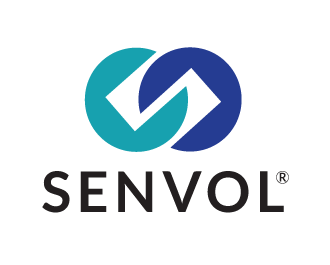New York, NY – October 4, 2015 – Mark Shortt, Editor for Design-2-Part Magazine, recently interviewed Senvol President Annie Wang on the topics of data for design engineers, as well as creating design rules for additive manufacturing. Below is an excerpt from the interview:
Data for Design Engineers
Senvol develops information tools for additive manufacturing that include the Senvol Database, a 3D printing database of more than 1,000 industrial additive manufacturing machine and material entries. Users can search the database by more than 30 fields, including machine build size, machine price, material type, and material tensile strength.
“Design engineers already use the database a lot, especially on the materials side,” she said. “Let’s say they have a certain design that they’ve already designed for a part that already exists, and they know that they want to make that part in Inconel 718. They can then go to the database and say, ‘Okay, what are all the Inconel 718 materials that are available to me in additive manufacturing, and what are those material properties?’
“We also have some design engineers who look at the materials section in a different way. They’ll say, ‘This is the range of tensile strengths that I’m looking at, or hardness that I’m looking at, or Young’s modulus that I’m looking at,’ and they put that in, and it filters through all the materials and tells you which materials fit that description. So you don’t have to look at it by material type; you could really look at it property by property.
“The other thing is that after they’ve found the right material, the design engineer can also very quickly look at and see what machines are available. So what machines work with those materials that they’re looking at? And if they wanted to get a part made, they could call up a service bureau and specifically ask, ‘Do you have this machine? Do you have this material?’ and be able to get test parts made.”
Creating Design Rules for Additive Manufacturing
Senvol is one of several organizations recently awarded a grant for the America Makes project, ‘A Design Guidance System for Additive Manufacturing. ’ The project, which also enlists the aid of Georgia Institute of Technology, Siemens Corporate Technology, Lockheed Martin, MSC, and GKN Aerospace, among others, seeks to address gaps and deficiencies that have been identified in the additive manufacturing design-to-print workflow.
“It’s a really big challenge and we’re really excited about the project,” Wang told D2P. “In additive manufacturing, the design rules are very different from conventional manufacturing. An engineer who’s designing something that’s meant to be machined, or injection molded, or cast would have an inherent understanding of what they need to be aware of. For example, if you’re designing something for machining, you’re thinking about, ‘How many faces am I machining, where am I going to put the jigs?’ et cetera.
“But for additive, the design rules are just completely different. And it’s not just different because it’s additive, but it’s also very different depending on what machine and what process you use. So the rules for SLA, or stereolithography, also known as photopolymerization, are going to be totally different from powder bed fusion, also known as SLS, or selective laser sintering.
“Because the design rules are so different because it’s additive, and they’re so different because each process has its own kind of design rules, it’s very hard for people to learn that very quickly. So design engineers need to be re-educated, or educated in a different way, if they want to be designing for additive. And right now, unfortunately, a lot of the design rules are still kind of ‘black magic.’ It’s by experience only, and so if you have experience operating the machines, or looking at parts that come out of the machines, then you have a good sense of what they are, but, unfortunately, because additive is still pretty young, we haven’t gotten to a point where we’re codifying that knowledge and making it available for all designers, unlike some of the conventional manufacturing processes, where it’s very well understood.”
The America Makes project takes several important “baby steps” toward achieving design rules for additive manufacturing, Wang said. Participants are currently working on a selection tool, which, based on the design of a part, will help the designer automatically narrow down the list of machines and materials that they should be looking at. If a designer inputs certain values relating to the geometry of the part, the database should be able to say, for example, “If you want a minimum wall thickness of 1 millimeter, then these are the materials that make sense, and these are the materials that don’t make sense,” she said.
“So that’s one thing we’re going to be working on—basically, based on the design, how do you narrow down very quickly and automatically, the list of machines and materials that you should be looking at” said Wang.
To read the full article, click here.
To view more Senvol news stories, click here.
